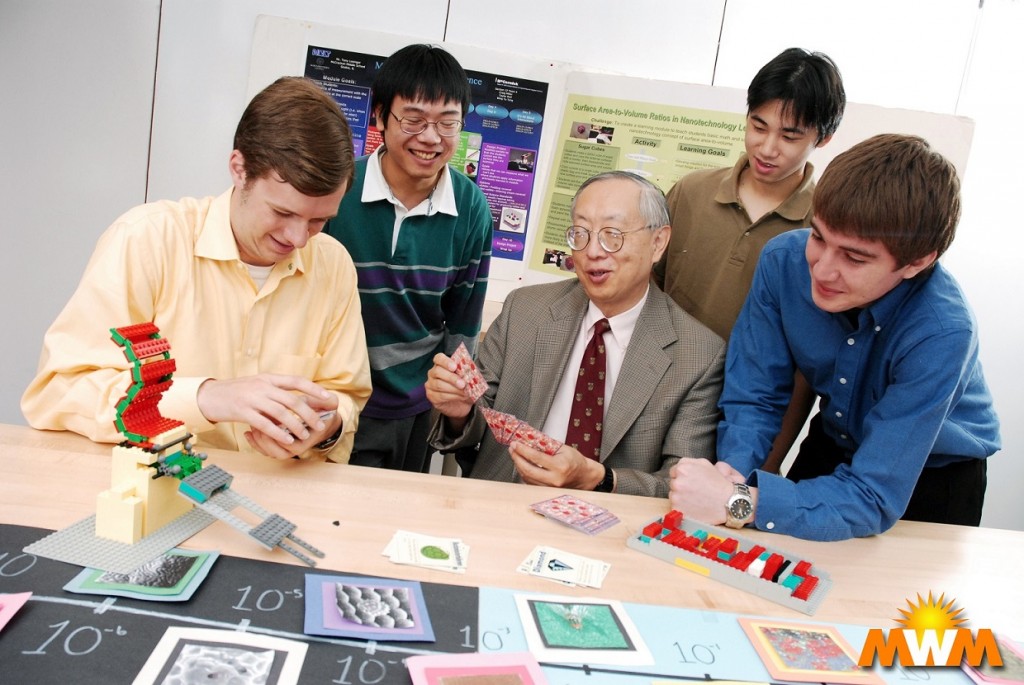
Robert Chang is a Professor of Materials Science and Engineering at the first materials science academic department in the world, created more than 50 years ago at Northwestern University, where he is also director of the Materials Research Institute.
He holds a Bachelor of Science in Physics from Massachusetts Institute of Technology (MIT) and a Ph.D in Plasma Physics from Princeton University. He spent 15 years performing basic research at Bell Labs (Murray Hill). During the past 28 years at Northwestern University, he has directed several National Science Foundation (NSF) centers and programs in materials research and education.
Prof. Chang was the president of the Materials Research Society (MRS) in 1989. He is the General Secretary and Founding President of the International Union of Materials Research Societies (IUMRS). He has received many distinctions for his work, such as the Woody Award from MRS in 1987, the Siu Lien Ling Wong Fellow from the Chinese University of Hong Kong in 1999, and the NSF Director’s Distinguished Teaching Scholar Award in 2005. He is fellow of the American Vacuum Society and MRS, and honorary member of Materials Research Societies of India, Japan and Korea.
He is (co)author of 400 peer reviewed journal articles, with near 13,000 citations, and h-index of 56.
Read our interview with the plenary speaker.
SBPMat newsletter: – Under your viewpoint, which are your main contributions in the field of Materials Science and Engineering?
Robert Chang: 1. Plasma processing of semiconducting materials;
2. Carbon based materials, such as diamond, fullerene, and carbon nanotubes, and their related devices;
3. 3rd generation solar cells;
4. Infrared plasmonics and sensors;
5. Thin film oxides for electronic and photonic devices.
Top publications below.
H. Cao, Y. G. Zhao, S. T. Ho, E. W. Seelig, Q. H. Wang, and R. P. H. Chang. Random Laser Action in Semiconductor Powder. Phys. Rev. Lett. 82, 2278 (1999); DOI:http://dx.doi.org/10.1103/
Michael D. Irwin, D. Bruce Buchholz, Alexander W. Hains, Robert P. H. Chang, and Tobin J. Marks.p-Type semiconducting nickel oxide as an efficiency-enhancing anode interfacial layer in polymer bulk-heterojunction solar cells. PNAS, vol. 105 no. 8, 2783–2787 (2008); doi: 10.1073/pnas.0711990105.
Q. H. Wang, A. A. Setlur, J. M. Lauerhaas, J. Y. Dai, E. W. Seelig and R. P. H. Chang. A nanotube-based field-emission flat panel display. Appl. Phys. Lett. 72, 2912 (1998);http://dx.doi.org/10.
Quanchang Li, Vageesh Kumar, Yan Li, Haitao Zhang, Tobin J. Marks, and Robert P. H. Chang. Fabrication of ZnO Nanorods and Nanotubes in Aqueous Solutions. Chem. Mater., 2005, 17 (5), pp 1001–1006. DOI: 10.1021/cm048144q.
SBPMat newsletter: – And what about your main contributions to science education, especially in Materials Science?
Robert Chang: – Over the past 20 years, I have led the development of the Materials World Modules program to teach pre-college students about Materials and Nanotechnology: materialsworldmodules.org; nclt.us; gsasprogram.org; imisee.net.
SBPMat newsletter: – Please give us a short teaser about your plenary talk at SBPMat meeting. What do you intend to broach?
Robert Chang: – Mobilizing world-citizens to solve global problems together!
SBPMat newsletter: – Feel free to leave other comments to our readers from the Materials research community, if you want so.
Robert Chang: – Materials and nanotechnology research and education are the driving force of all future technologies, including energy, environment, health, and security.
